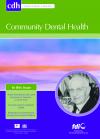Community Dental Health

- Cover Date:
- March 2008
- Print ISSN:
- 0265 539X
- Vol:
- 25
- Issue:
- 1
Coronal caries experience in dentate Jordanian adults
Objective: To assess the coronal caries experience and associated risk indicators among a sample of Jordanian adults. Participants and methods: A random sample of 1,096 dentate Jordanian adults in Irbid region were interviewed and clinically examined for coronal caries using the DMFS index. Descriptive summary statistics, bivariate, and regression analyses were employed. Results: Findings revealed that the mean numbers of coronal decayed surfaces (DS), missing surfaces because of caries (MS), filled surfaces (FS), decayed and filled surfaces (DFS) and DMFS were 6.3, 20.6, 8.0, 14.3 and 34.9 respectively. All subjects had coronal caries experience and 93% had untreated lesions. Subjects of older age, with less education, urban residence, lower incomes, no dental insurance, a smoking habit and irregular oral hygiene practices had a significantly higher coronal caries experience (p<0.05). Age, income, education, residence, smoking, brushing and flossing collectively explained 45% of the variance for the mean number of coronal DMFS. Conclusions: This study provided useful information on the coronal caries status of Jordanian adults. Modifications of several social factors could potentially reduce coronal DMFS, to improve oral health status and function in adults
Keywords: Caries, coronal, DMFS, Jordan, risk indicators
- Article Price
- £15.00
- Institution Article Price
- £
- Page Start
- 50
- Page End
- 54
- Authors
- A.A. Hamasha, R.A. Safadi
Articles from this issue
- Title
- Pg. Start
- Pg. End
- Editorial - Oral health promotion by the oral health products industry: unrecognised and unappreciated?
- 2
- 3
- Selecting a coherent set of indicators for monitoring and evaluating oral health in Europe: criteria, methods and results from the EGOHID I project.
- 4
- 10
- A comparison of two methods for the evaluation of the daily urinary fluoride excretion in Romanian pre-school children
- 23
- 27
- A randomised control trial of oral health education provided by a health visitor to parents of pre-school children
- 28
- 32
- The influence of social indices on oral health and oral health behaviour in a group of Flemish socially deprived adolescents.
- 33
- 37
- Development of a shortened Japanese version of the Oral Health Impact Profile (OHIP) for young and middle-aged adults
- 38
- 43
- The prevalence of enamel opacities in permanent teeth of 11-12 year-old school children in Kuala Lumpur, Malaysia.
- 55
- 58
